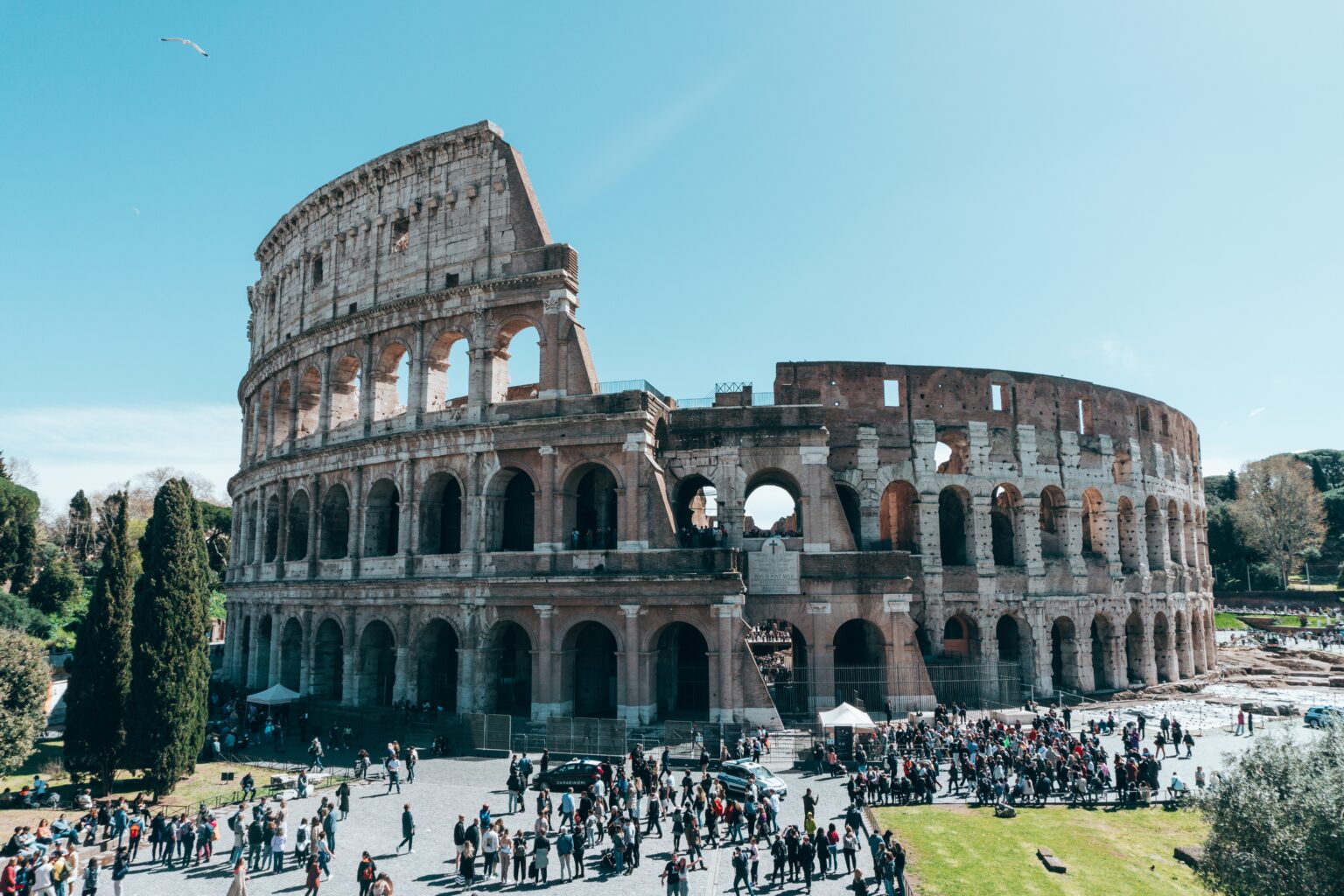Hey there, fellow travel enthusiasts! Today, I want to take you on a virtual journey to one of the most iconic and breathtaking landmarks in the world: the Colosseum in Rome, Italy! Brace yourself for a captivating adventure filled with history, architectural marvel, and the charm of ancient Rome. Located in the heart of Rome, the Colosseum, also known as the Flavian Amphitheatre, stands as a magnificent testament to the grandeur and legacy of the Roman Empire. Stepping foot inside this colossal structure is like stepping back in time, unraveling centuries of captivating tales and imagining the gladiatorial spectacles and public events that once took place within these walls.
A Glimpse into History
Let’s embark on our journey by delving into the historical significance of the Colosseum. Constructed between 70 to 80 AD, under the Emperor Vespasian, this architectural masterpiece served as a venue for various forms of entertainment and public spectacles. Its construction was completed by Emperor Titus, Vespasian’s son, and it officially opened to the public in 80 AD. The Colosseum embodies the remarkable architectural and engineering prowess of the ancient Romans and stands as a symbol of their power and cultural heritage.
Architectural Marvel
As you approach the Colosseum, the first thing that captures your attention is its sheer size and grandeur. It’s awe-inspiring! The elliptical shape of the amphitheater, with its four towering levels, rises 48 meters high and could accommodate an estimated 50,000 to 80,000 spectators. The exterior facade, adorned with Doric, Ionic, and Corinthian columns, is a stunning blend of classical Roman architecture. It’s impossible not to marvel at the intricate details and the magnitude of this ancient structure.
Also Read:Hiking The Scenic Trails Of The Swiss Alps
Stepping through the entrance of the Colosseum, you can almost hear the echoes of the past. You can picture the gladiators preparing for their battles, the roar of the crowd, and the suspense that filled the air. The Colosseum was primarily used for gladiatorial contests, where warriors battled each other or wild animals to entertain the masses. However, it also hosted other events such as mock sea battles, animal hunts, and theatrical performances. The amphitheater was a central pillar of Roman entertainment and a place where social status was flaunted and social unity fostered.
Insider Tips for Your Visit!
Now that we’ve explored the historical and architectural wonders of the Colosseum, let me share some insider tips for your visit:
1Plan Ahead: The Colosseum is undoubtedly a popular attraction, so it’s best to purchase your tickets in advance to avoid long queues.
2 Guided Tours: Consider joining a guided tour to make the most of your visit. Expert guides will provide fascinating insights into the history and significance of the Colosseum, enriching your experience.
3Time Your Visit: To beat the crowds and enjoy a more intimate experience, plan your visit early in the morning or later in the afternoon.
Explore the Surroundings: After your visit to the Colosseum, take a leisurely stroll through the nearby Roman Forum and Palatine Hill. These archaeological sites offer a deeper understanding of ancient Roman life and are included in the same ticket.
5 Capture the Moment: Don’t forget your camera! The Colosseum is a photographer’s paradise, offering countless angles and perspectives for that perfect shot.
Cherishing the Memories!
Visiting the Colosseum is an experience that will leave you mesmerized and profoundly touched by the magnificence of ancient Rome. It’s not just a monument; it’s a living testament to the grandeur, history, and cultural heritage of a remarkable civilization. The Colosseum holds within its walls countless stories and serves as a reminder of the enduring legacy of the Roman Empire.
More: Wanted to download Odisha Magazines, visit here
So, whether you’re a history buff, an architecture lover, or simply eager to immerse yourself in the wonders of ancient Rome, a visit to the Colosseum should definitely be on your bucket list! Pack your bags, unleash your wanderlust, and get ready to be captivated by the awe-inspiring Colosseum. It’s a journey you’ll never forget! Safe travels and happy exploring!
FAQ For Visiting the Iconic Colosseum in Rome, Italy
What is the Colosseum?
The Colosseum is an ancient amphitheater in Rome, Italy. It was built during the Roman Empire and is now a major tourist attraction.
Where is the Colosseum located?
The Colosseum is located in the center of Rome, specifically in the archaeological area of the Roman Forum and Palatine Hill.
What are the visiting hours for the Colosseum?
The Colosseum’s opening hours vary depending on the season. Generally, it opens at 9:00 a.m. and closes between 4:30 p.m. and 7:15 p.m. It’s advised to check the official website or local tourist information for the most up-to-date hours.
Are tickets required to enter the Colosseum?
Yes, tickets are required to enter the Colosseum. It’s best to purchase them in advance to avoid long lines and potential sold-out situations. Online ticket vendors and official ticket offices are available for purchase.
Are there any restrictions or rules inside the Colosseum?
Yes, there are certain regulations to follow. For example, you must not touch or climb on the ruins, and you should respect the designated visitor paths. Additionally, large backpacks and bags may not be allowed inside, so it’s best to check the guidelines beforehand.
Are there facilities available at the Colosseum?
Yes, there are restrooms, drinking fountains, and souvenir shops available on-site. Nearby, you’ll find various cafes and restaurants to grab a bite to eat.
Is the Colosseum accessible for people with disabilities?
Efforts have been made to make the Colosseum accessible, but due to its historical nature, there may be some limitations. It’s recommended to check accessibility options and notify the staff in advance for assistance.

